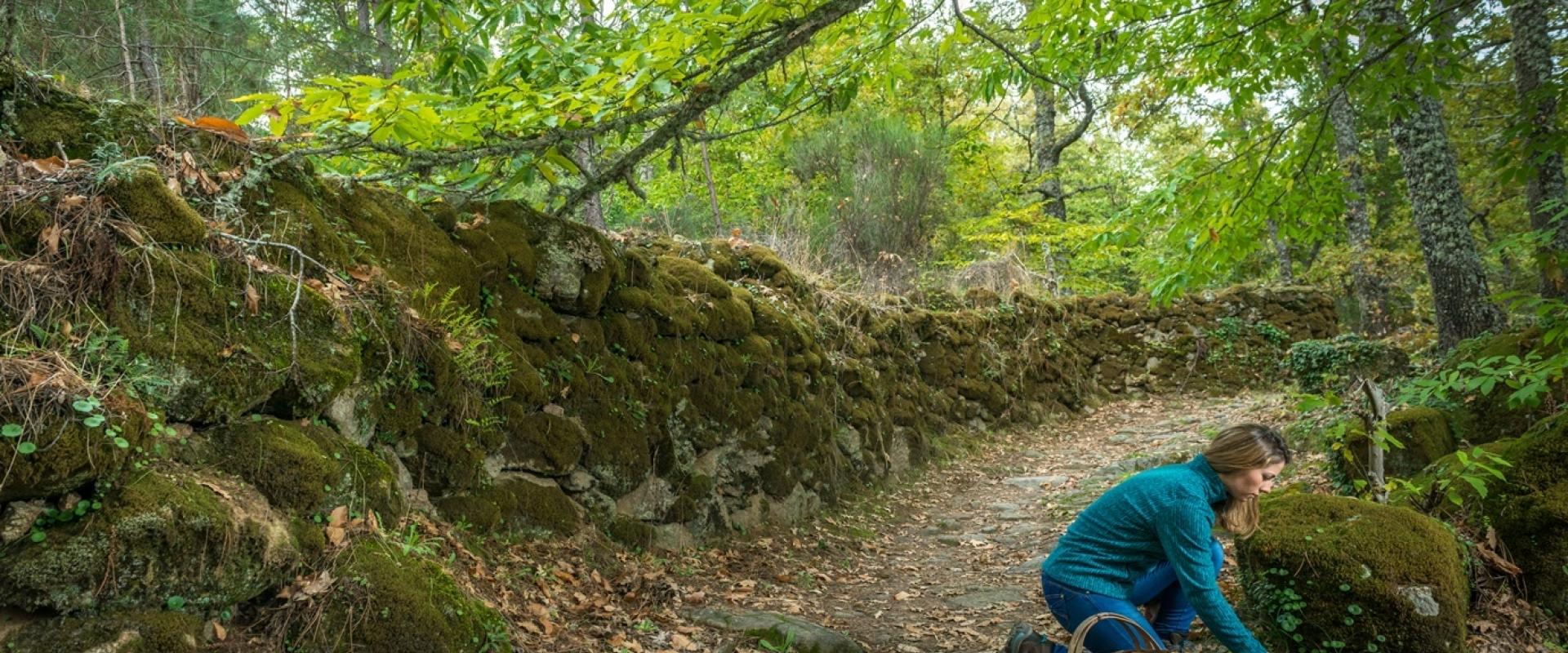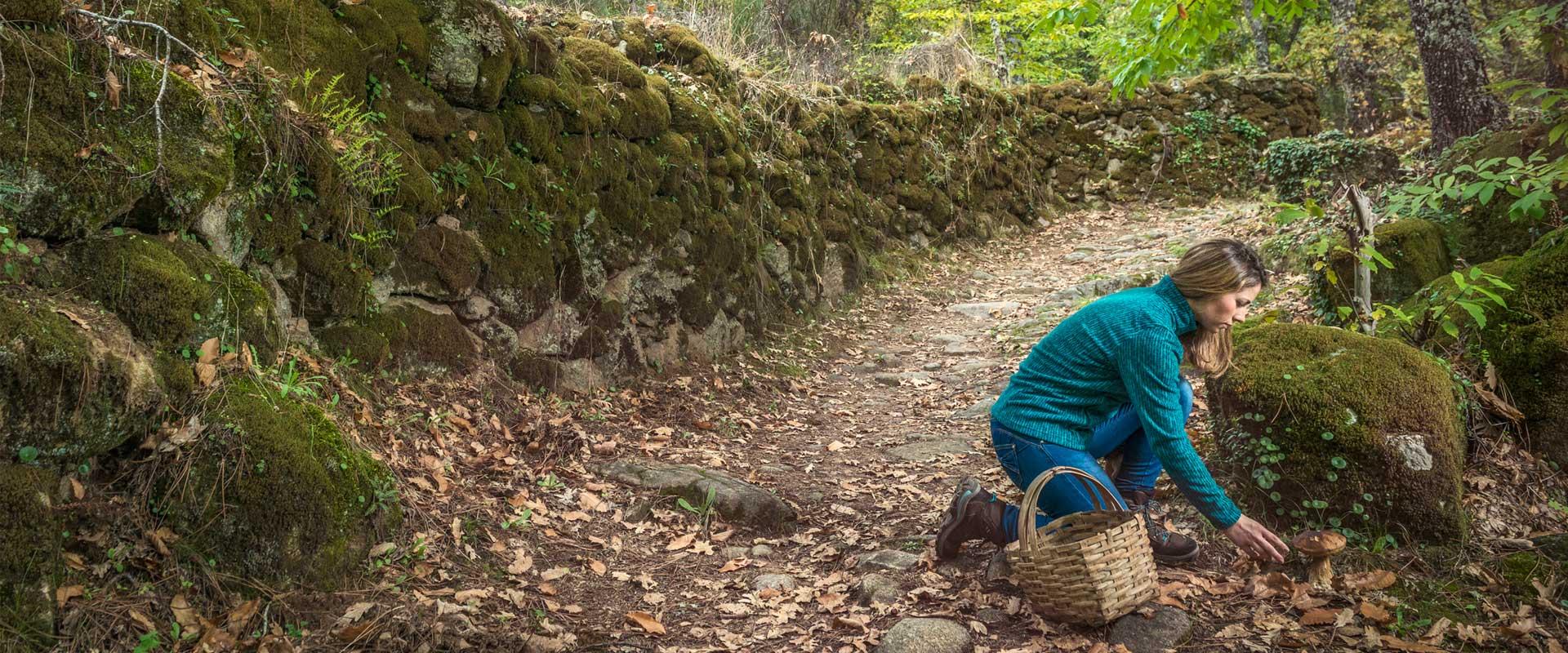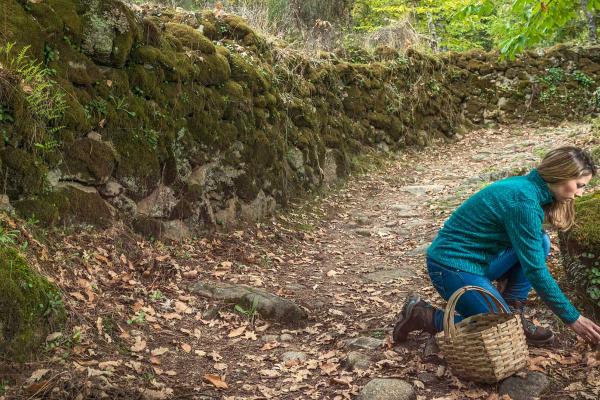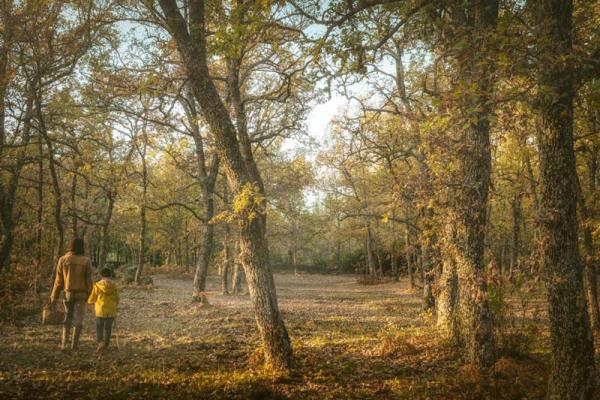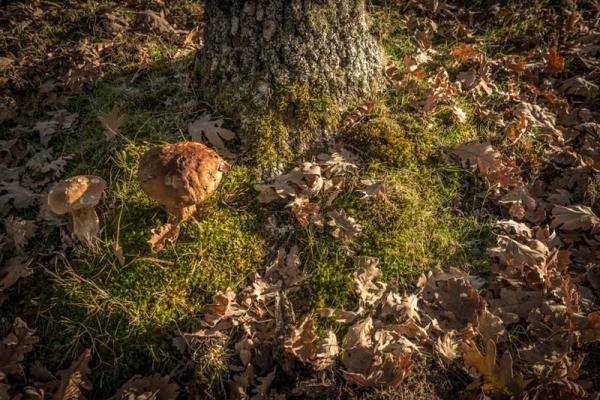Mushroom harvest
Together with the chestnut collection, the autumn also brings the mushroom collection.
In the province of Salamanca there is a mixture of Mediterranean and Atlantic weather, and the vegetation is a clear reflection of the ground and the weather; so, the vegetation is distributed according to several phyto-climatical areas. As a result, we have holm oak groves, Gall oaks, cork oaks, pine woods, poplar groves, birch trees, valley forests, meadows, etc, giving as a result the same amount of habitats which are ideal for the mushroom growing.
In the meadows where the bovine and sheep cattle graze, we can find such interesting mushrooms as the "setas de cardo" (Pleurotuseryngii) and a very well known variety of mushrooms, the "seta de caña", bigger and lighter than the mushroom itself, with several edible especies (Agaricussp. pl.), but a dangerous smelly one (A. xanthoderma) which can cause some kind of stomach problems. There are also in this area the mushrooms "pan de pueblo" (Leucopaxillus lepistoides) and "pedo de lobo gigante" (Langermania gigantea), both of them very big and good to be eaten.
If you visit the eastern areas of the Sierra (Béjar, Francia y Gata) and walk around the beautiful natural areas and villages, full of oak groves, chestnut trees and pine forests, you will be able to enjoy the "amanita de los césares" (Amanita caesarea) with its beautiful orange and yellow colours; the "rebozuelo" or "chantarela" (Cantharellus cibarius), which is c deliciously cooked in some restaurants and bars; the famous "boletos"; or, as they are called in this area, the "seta de roble" and "seta de castaño" (Boletus edulis y Boletus pinophilus), which can also be found in pine forests.
At the bottom of these ecosystems, on the plains, where there are lots of holm oaks, cork oaks and Gall oaks we cand find high quality species such as the "parasol" (Macrolepiota procera) or "cogolmillo" –this is the way they prefer to call it in La Alberca-, which can be served roasted and offered to the inhabitants of the place and visitors (together with roast chestnuts) on the Magosto festival (31st October).
Other interesting mushrooms from the gastronomic point of view that can be found in these ecosystems are: the "cabeza de negro" (Boletus aereus) and the "criadillas de tierra" (Terfeziasp. pl.); these last ones live underground and many people, after washing, peeling and cutting them, eat them in an omelette of with scramble eggs. Another kind of mushrooms which people from Andalucia or Extremadura usually like a lot is the "gurumelo" (Amanita ponderosa), which starts growing in the west of the Peninsula and gets to Salamanca.
In the river areas or forests, on black poplars and other trees, near the fresh wáter, we can see growing the "seta de chopo" (Agrocy beaegerita), which appears on the trunks of the trees in bunches. Scattered here and there, we can see wild pines, stone pines and resin pines. Under these trees we can find the very well known "níscalo" (Lactarius deliciosus), which is a litlle bit rough but tasteful.
The Sierras de Francia, Béjar, Quilamas and El Rebollar are the areas which have beed ruled by the Junta de Castilla y León and Diputación Provincial to be legally able for the mushroom harvest.
The mushroom season give as a result the celebration of different festivals and events, such as courses to be able to recognise and pick up the edible mushrooms. There are also some restaurants that are specialized in offering tastings and dishes cooked with mushrooms. The typical Jornadas Gastronómicas – Micológicas are organized to let people know the gastronomy based on mushrooms.
In the Casa del Parque Sierra de Francia – Las Batuecas you can get further information about the mushroom harvesting in this area of the provincese
